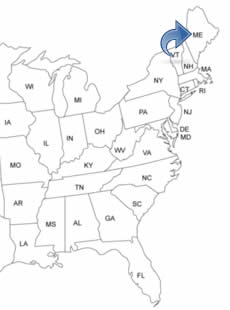MAINE PEOPLE SEARCH!
- ✔ Contact Info
- ✔ Phone Numbers
- ✔ Criminal Records
- ✔ Income Info
- ✔ Neighbors
- ✔ People's Age
- ✔ Property Ownership
- ✔ And Much More
Portland, Maine
Portland is located in the southern part and is the largest city in the U.S. State of Maine. Portland is Maine's business, financial and retail capital and is currently experiencing a building boom. Portland is ranked as one of the ten safest US Cities to live in. The city is also ranked as the most fascinating US Cities culturally. Forbes Magazine has named Portland, Maine as America's most livable city.
To See And To Do In Portland
- Portland Museum of Art
- Portland Observatory
- Portland Head Light and Museum
- Children's Museum of Maine
- Victoria Mansion
- Old Port
- Maine Narrow Gauge Railroad Museum
- Casco Bay Lines
- Lucky Catch Lobster Cruise
- Maine Day Trip
- Maine Historical Society & Museum
- Simply Scandinavian
- Downtown
History Of Portland - Timeline
In 1623, the first European, an English naval captain named Christopher Levett, arrived. He later returned to England and never came back to Portland. In 1633, Portland, then named Casco, was first permanently settled as a fishing and trading village.
In 1658, the town's name changed to Falmouth. In 1668, the Eastern Cemetery was established. Native American destroyed the town in 1676. The town was rebuilt in 1678. In 1690, the town again was destroyed. This time by French and Native allies. The settlers held out for four days before surrendering.
In 1718, the Town of Falmouth was established. In 1740, a church was built. In 1763, the Falmouth Library Society was organized. In 1775, during the Revolutionary War, the British Royal Navy destroyed the town. And once again the town was rebuilt. In 1785, the Falmouth Gazette newspaper was published. In 1786, Falmouth was renamed Portland. In 1790, a lighthouse was built.
In 1806, a school for boys was built. In 1807, the signal tower "Portland Observatory" was built. In 1820, Portland was selected as the capital in the state of Maine. In 1821, the Portland High School was established. In 1825, First Parish Church was built on 425 Congress St. In 1828, free African-Americans built the Abyssinian Meeting House. In 1829, the Western Cemetery was established and a theatre was built on Union Street. In 1832, the Cumberland and Oxford Canal opened.
Portland remained to be the capital until 1832 when Augusta became the capital. In 1843, a railway service between Portland and Boston began. In 1849, the Portland Gas Light Company was founded, the third oldest gas light company in the country. In 1853, the railway was completed and Portland became the primary seaport for Canadian exports. In 1855, the Evergreen Cemetery was established. In 1856, the Chestnut Street Methodist Church was constructed. In 1862, the daily newspaper "Portland Press Herald" was founded.
In 1863, the town had horse-drawn street cars. The same year the United States Navy fought Confederate States Navy in Portland Harbor. 24 crewmen surrendered to the United States Navy and were held as prisoners of war at Fort Preble in South Portland.
In 1866, a fire destroyed most of the commercial buildings in the city and hundreds of homes and a couple of churches. More than 10,000 people were left homeless. In 1867, a Baptist Church was built at 353 Congress Street. In 1868, the United States Customhouse was built. In 1869, the Cathedral of the Immaculate Conception was built.
In 1900, more than 50,100 people lived in the city. In 1909, the City Hall was built. In 1914, a type of electric railway service began between Portland and Lewiston. (Interurban). In 1923, the Portland Symphony Orchestra was established.
In 1929, the State Theatre opened in downtown. In 1933, the Portland-Westbrook Municipal Airport airport was established. (Today's Portland International Jetport).
In 1941, the construction of an underground oil pipeline between Portland and Montreal, Canada, was completed. In 1953, the television station WCSH began broadcasting in the city. In 1984, the Portland Ice Arena opened. In 1994, the baseball stadium "Hadlock Field" opened. In 2010, the 1,680 seat historic "State Theater" reopened as a performing arts venue.

